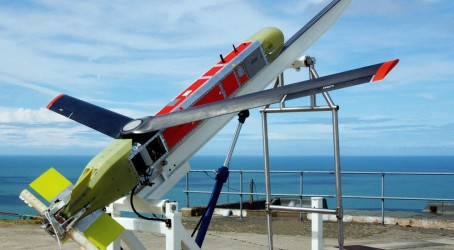Articles
Missiles are evolving as technology evolves – to the point where they can complement or even replace some of the functions of a piloted aircraft or unmanned aerial vehicle. The industry itself tends to be dominated by global players in the US and Europe, which compete to supply weaponry to new aircraft and to troops on the ground and at sea.
MBDA, which developed the Meteor air-to-air missile shown above, is owned by an Anglo-French-Italian-German consortium comprising BAE Systems, EADS and Italian firm Finmeccanica. MBDA has design, manufacturing and assembly operations in the UK, France, Italy and Germany, and is the largest company of its type in Europe, with major competitors in the US. In Britain, MBDA employs 2,000 engineers.
Mark Slater, future systems director at the company, confirms that missile systems are becoming ever more technically sophisticated. He says: “Today we tend to call them ‘complex weapons systems’ to reflect this.
“In our business, we’re developing systems that counter the threat posed by an aggressor, and, whatever we do, someone is trying to counter. The bottom line is to stay ahead.”
MBDA works with its customers to be responsive. Missile systems can be in service for long periods – 50 years – and need to be supported over that time. But the development cycles for new complex weapons systems are getting shorter to respond to the changing demands of the military in theatre. Precision and reduction of collateral damage are also key. Slater says: “One of the challenges for MBDA at the moment, the big emphasis that exists, is to try and reduce the time significantly taken to develop new systems.
“We want to be agile, reactive and flexible to provide the military capabilities required by our customers. We’re always trying to predict the future – and that is a difficult thing to do.” As well as current conflicts, the company has to consider what the military environment might look like in many years’ time. “Our cycles are long,” says Slater, “and we try to consider what the environment will look like in 2030 or 2040 too, to make sure we’re working on the right things. We have to be good at predicting the future but also agile enough to respond to a changing environment. That’s a big challenge and one that makes our industry quite different from others.”

An example of a complex weapons system that has been developed by MBDA relatively quickly in response to military demands is the ground-launched Fire Shadow, which is expected to enter service in Afghanistan. Reflecting the increasing technological sophistication of missile systems, it is a “loitering munition” that has some of the characteristics of an unmanned aerial vehicle (UAV), in that it can fly autonomously over an area of tension for a period before identifying a target. The final decision on whether to engage is made by operators on the ground.
The Fire Shadow relies on a two-stage propulsion system, launching using conventional solid propellant booster technology but then engaging a propeller system for the remainder of the mission. “The real challenge is transitioning from a boosted launch into sustained flight powered by an engine-driven propeller propulsion system,” says Slater. Unusually for a new system, the missile was developed in less than three years. With an operating range of 100km, it can loiter in a target area for up to 10 hours. It can be targeted using common surveillance technology.
The Fire Shadow is expected to prove attractive because it can obviate the need to deploy a fixed-wing strike aircraft or armed UAV over an area for long periods, with associated expense and risk to human pilots in the case of a fighter, or servicing costs in the case of a UAV.
MBDA sees the Fire Shadow as complementary to UAV technology, rather than a competitor. But Slater says missile systems can be expected to become more autonomous and intelligent in the coming years. He says: “Interestingly enough, in the future you can see a point coming where information in theatre might be sophisticated enough that you don’t need a human in the loop to engage a target. That would contravene some current rules of engagement, so when exactly it will come is difficult to predict. But no doubt it will happen.”